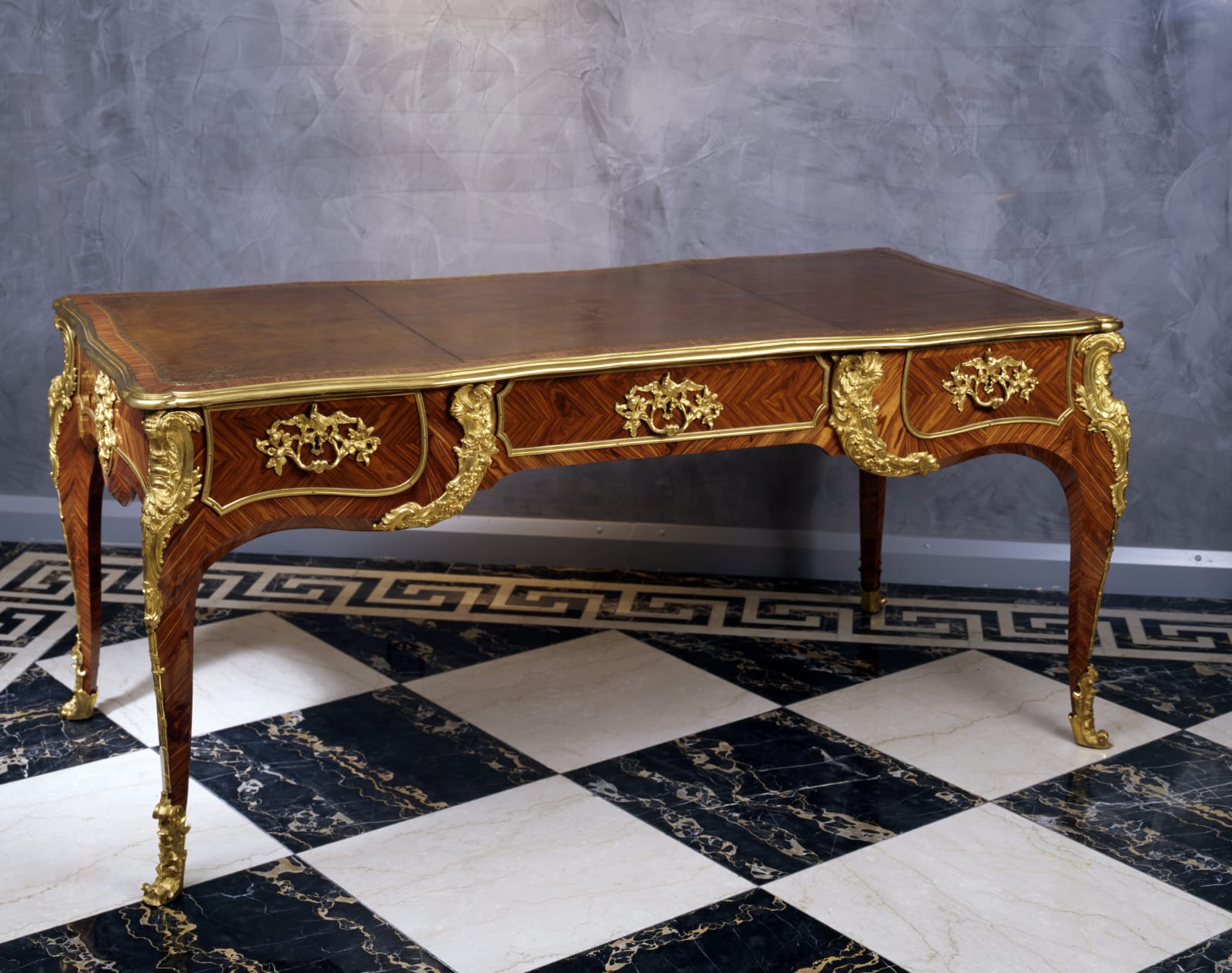Pierre II Migeon France, 1701-1758
Literature
Pierre Kjellberg, "Le Mobilier Français du XVIIIe Siècle", 1998, p. 575, pl. F, illustrating a very similar bureau plat by Pierre II Migeon.
A very fine Louis XV gilt bronze mounted feather banded kingwood bureau plat by Pierre II Migeon, stamped MIGEON and JME, the shaped serpentine top with a gilt-tooled leather-lined writing surface with gilt bronze surround above three framed frieze drawers each with a scrolling rocaille escutcheon and handle centred by a swan and divided by scrolled rocaille mounts, the sides with conformingly elaborate mounts, on cabriole legs with C-scroll and acanthus chutes terminating in scrolling foliate sabots
Paris, date circa 1750
Height 81 cm, length 178 cm, depth 87 cm.
A similar but smaller Louis XV bois de rose and amaranth bureau plat with floral inlays by Migeon can be found at the Musée de Beauvais. Pierre II Migeon (1701-58) was the most celebrated member of an important Protestant Parisian family of ébénistes, who supplied pieces to the royal court and cream of French society. He was the son of the ébéniste Pierre I Migeon (b. circa 1670) and is believed to have started working in his father's atelier in the Faubourg Saint-Antoine in 1726. By 1739 he was firmly established as the head of the family workshop and furniture emporium at rue de Charenton. As the "Livre-Journal" of 1730-36 testifies, the Migeon establishment enjoyed considerable prosperity with no less than nine separate locations and a clientele that included the duchesse de Bourbon, the duc d'Orléans, the duchesse de Rohan and in 1740 the Menus-Plaisirs, followed shortly after by the Garde-Meuble de la Couronne on behalf of Madame de Pompadour.
Pierre II Migeon prospered both as an ébéniste and as a marchand, working in collaboration with the finest in his trade including R.V.L.C., Criard, Birklé, Macret, Topino, Boudin, Dautriche and others. He tended to specialise in secrétaires, commodes, writing tables and small pieces with elaborate fittings such as luxurious water closets, supplied to the ladies of court. The most notable among them was Mme de Pompadour, for whom he made encoignures and a night table for her apartment at Marly as well as bidets and his specialty, the commode chair. Stylistically Migeon's pieces tended to be restrained and never excessively Rococo though he exhibited a preference for serpentine shapes and sometimes heavy forms. He often favoured kingwood and tulipwood veneers as well as highly ornate and decorative gilt bronze mounts. Occasionally he used lacquer work and was probably the first ébéniste to use mahogany veneers.
Following his death, his son Pierre III Migeon (1733-75, maître 1761) continued the already flourishing business until his own death. Thereafter the business was continued by the latter's widow until about 1785. Work by all members of the family is of the very finest quality. Pieces by Pierre II Migeon can be seen in Paris at the Musées des Art Décoratifs, the Louvre, Petit Palais and Carnavalet, while others at the Châteaux de Fontainebleau and Champs-sur-Marne and Musées des Arts Décoratifs, Lyon and Beauvais. His work is also prized among the collections at the Victoria and Albert Museum and Wallace Collection, London as well as at Waddesdon Manor, Buckinghamshire and those at the National Gallery of Art, Washington and the Residenzmuseum, Munich.
